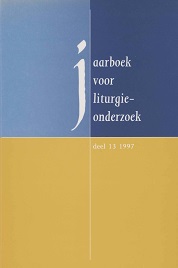De kruisverering op Goede Vrijdag in de Spaanse liturgie
Abstract
The early medieval Spanish liturgy of Good Friday, which developed apart from the Roman tradition, consisted of three offices. The eldest sources preserved show that the Cross has a prominent place during these services. This especially counts for the terce which is dominated by the adoration of the Cross, while also the none, in which the ritual of the reconciliation of penitents (indulgentia) takes place, starts with carrying a gold Cross with relics in procession. Although matins in the morning is not specifically focussed on the Cross, they do prelude somewhat to the rituals of the adoration of the Cross as well als to the reconciliation. These two main components are related in all services of Good Friday. The ceremony of the Cross is also focussed on reconciliation and vice versa the reconciliation is embedded in the memory of the salutary death at the Cross. During the terce the Cross is carried in procession from the main church to the church of the Holy Cross where it is being honoured with a kiss by the clergy and the people. Most of the texts which are being prayed and sung during this adoration are unknown in other liturgical traditions of the West. They show that the Cross is worth to venerate because of its salutary significance due to Christ’s salutary death. However, the Cross does not refer to Christ’s death only as an isolated historic event, but Cross and crucifixion are absorbed in the whole history of salvation.
Published
Issue
Section
Copyright (c) 1997 Jaarboek voor liturgie-onderzoek

This work is licensed under a Creative Commons Attribution 4.0 International License.


